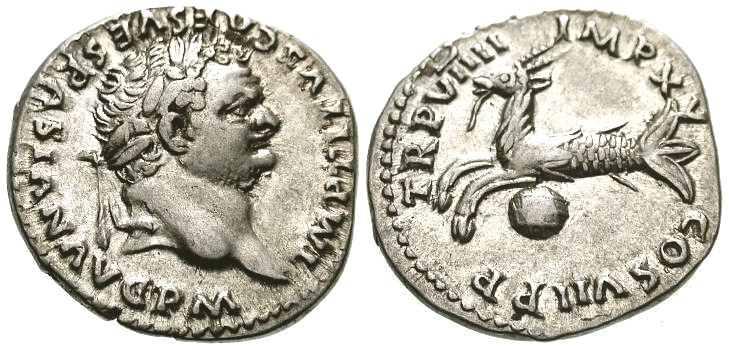It's probably the most famous volcanic eruption of all times - the 79 A.D. eruption of Mount Vesuvius that destroyed the cities of Pompeii and Herculaneum. So may it surprise that the exact date of this event is still unclear. The date of August 24 given in textbooks is based on two letters from the Roman author Pliny the Younger to Tacitus, a historian who had asked his friend for help to reconstruct the death of famous naturalist Pliny the Elder during the eruption. However the original letters didn't survive into modern times and what we know of Pliny's response is based only on medieval transcripts. Already there various versions exist with different dates (ranging from August to November) or even without any reference - this discrepancy can be explained by various transcription errors, almost inevitably considering that the eruption happened almost 17 centuries ago.
Also some archeological evidence suggests a later date for the eruption:
- The famous gypsum-casts show people wearing thicker clothing, unusual for August but appropriate for cooler temperatures of an early autumn. Also in many houses portable stovens - ready for use ? - were noted.
- The lack of typical summer fruits, but the discovery of fresh autumn fruits, like olives and figs in the shops, suggests a period in late October.
- Large jars, used for fermenting wine, were discovered already sealed. Considering that the grapes mature in early autumn this observation would suggest a date for the eruption at the end of October.
- A coin - a Capricorn Silver Denarius issued by emperor Titus in July - June 79 A.D.- found along the corpse of a woman buried in the ash suggests that the eruption occurred late in summer/early autumn, as the coin would not be in circulation earlier. However the exact identification of the coin (there exist various editions and the inscriptions of the recovered coin is difficult to read) is in dispute.
Also some archeological evidence suggests a later date for the eruption:
- The famous gypsum-casts show people wearing thicker clothing, unusual for August but appropriate for cooler temperatures of an early autumn. Also in many houses portable stovens - ready for use ? - were noted.
- The lack of typical summer fruits, but the discovery of fresh autumn fruits, like olives and figs in the shops, suggests a period in late October.
- Large jars, used for fermenting wine, were discovered already sealed. Considering that the grapes mature in early autumn this observation would suggest a date for the eruption at the end of October.
- A coin - a Capricorn Silver Denarius issued by emperor Titus in July - June 79 A.D.- found along the corpse of a woman buried in the ash suggests that the eruption occurred late in summer/early autumn, as the coin would not be in circulation earlier. However the exact identification of the coin (there exist various editions and the inscriptions of the recovered coin is difficult to read) is in dispute.
Fig.1. A Capricorn Silver Denarius (named so after the emblem on one side of the coin, on the other side celebrating the coronation ceremony of Titus to emperor in 79) seemingly similar to the coin discovered in the ruins of Pompeii (image from "A Brief Overview of the Flavian Dynasty", by L. HARSH)
- The remains of garum - a spicy fish sauce - made using the fish species Boops boops (bogue), abounding in the Mediterranean Sea from July to August, could also point to a period of the eruption sometime between late August - September.
Also some geological evidence, like the distribution of ash deposits, suggests a later eruption. The mapped ash layers suggest that during the eruption the wind blow from the east. This wind pattern is unusual for the summer in Naples, but dominant in the rest of the year.
So in the end...
"There are known knowns; there are things we know we know. We also know there are known unknowns; that is to say we know there are some things we do not know. But there are also unknown unknowns – there are things we do not know we don't know.“
Donald Rumsfeld, 2002
Bibliography:
STEFANI, G. (2006): Scoperte Campania - La vera data dell´eruzione. ARCHEO 260 - Ottobre: 10-13
ROLANDI, G.; PAONE, A.; LASCIO, M.di & STEFANI, G. (2008): The 79 AD eruption of Somma: The relationship between the date of the eruption and the southeast tephra dispersion. Journal of Volcanological and Geothermal research. Vol. 169(1-2): 87-98























